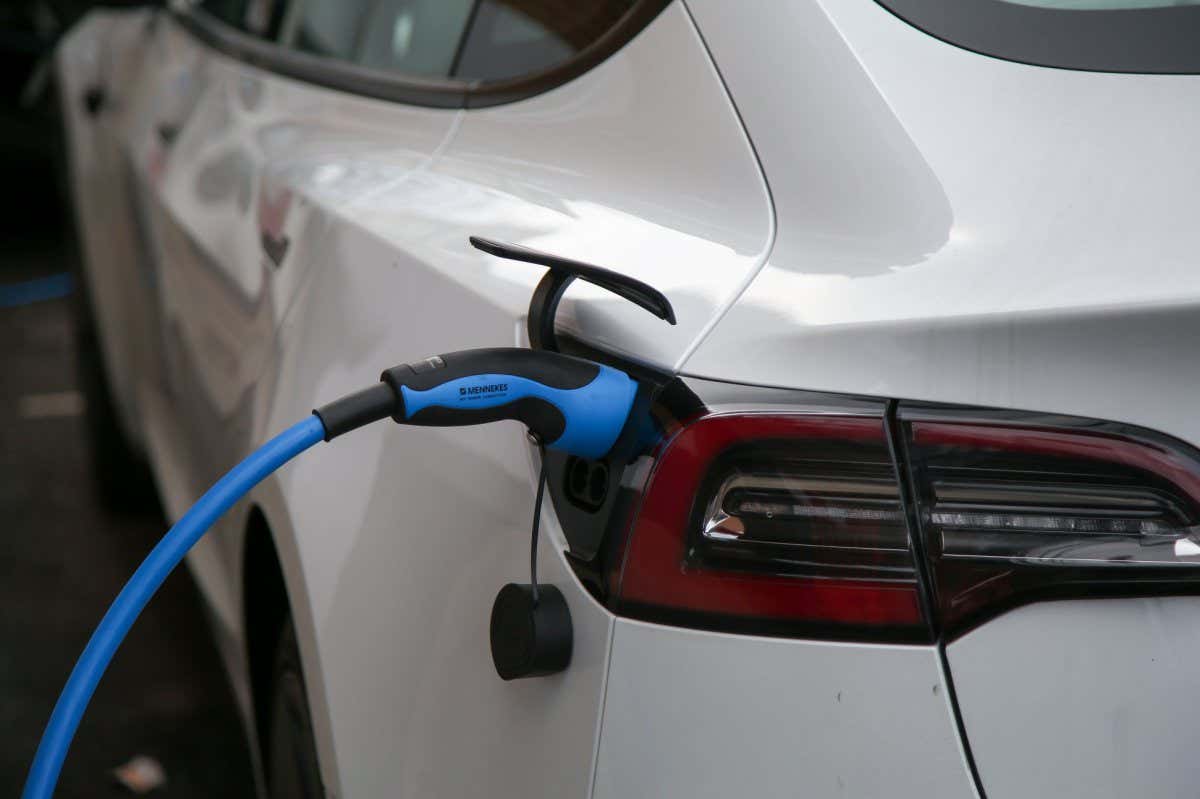As electric car ownership rises, we will need new infrastructure to avoid overwhelming electricity grids – including public charging stations and more daytime charging
Technology
22 September 2022
As electric car use grows, we will need to make changes to the energy grid to meet charging demand Dinendra Haria/SOPA Images/Shutterstock
The growth in electric car ownership could strain power grids if most drivers continue charging primarily at home overnight. Investment in daytime charging options will be crucial to help the western US power grid handle the demand with an estimated 50 per cent of drivers using electric vehicles by 2035.
That finding comes from computer models looking at how driver charging behaviours and available charging station infrastructure at home and in public places could impact peak net electricity demand – the highest electrical power demand minus power provided by solar and wind power.
If drivers primarily charge vehicles at home during the night, that could lead to a 25 per cent surge in peak net electricity demand when states reach 50 per cent electric vehicle ownership, and possibly surpass grid capacity at even higher levels of ownership. But expanding daytime charging opportunities could reduce that increase in peak net electricity demand to just 7.5 per cent and help reduce the costs of expanding grid capacity.
“One of the big results from our study is that just making the shift of which charging infrastructure you build and where you encourage people to charge is a huge difference in the result for the grid,” says Siobhan Powell at the Swiss Federal Institute of Technology in Zurich, Switzerland, who led the research while at Stanford University in California.
Powell and her colleagues used computer models to analyse charging patterns from the behaviour of 27,700 electric vehicle drivers in the San Francisco Bay Area. Such real-life data allowed the computer models to predict how an expanded population of 48.6 million future electric vehicle owners might impact the western US power grid that serves 11 states, including California.
The findings also show how a shift to daytime charging patterns could help the western US grid efficiently use its excess solar power, says Ram Rajagopal at Stanford University. Daytime charging can tap solar power when it is immediately available, instead of requiring power grid operators to invest in more energy storage to store daytime solar power for night-time charging.
The computer models showed that having more drivers charging during the day could reduce the grid’s energy storage requirements by between $700 million and $1.5 billion, compared with a business-as-usual scenario with many drivers charging at home during the night.
Getting to the point where 50 per cent of personal vehicles are electric by 2035 seems optimistic, says Gil Tal at the University of California, Davis, who was not involved in the study. He also noted that some of the anticipated surge in overnight charging demand could be mitigated by the fact that, with more people working from home, some electric cars may be charged at home during the day. But overall he says the study’s findings are encouraging, suggesting that future electric car adoption should be manageable.
“Their analysis is showing that the demand for electricity from transportation is very flexible demand,” says Tal. “And a lot of the problems can be solved by changing the time of use and the day of use.”
While this research was ongoing, the US Congress passed an infrastructure bill that was signed into law by President Joe Biden in November 2021 that included $7.5 billion specifically for a national network of charging stations for electric vehicles.
“It was not necessarily based on any kind of study that shows the impact on the grid, it was based on other considerations,” says Rajagopal. “But it turned out that things just lined up perfectly for this.”
Journal reference: Nature Energy, DOI: 10.1038/s41560-022-01105-7
Sign up to our free Fix the Planet newsletter to get a dose of climate optimism delivered straight to your inbox, every Thursday
More on these topics:
